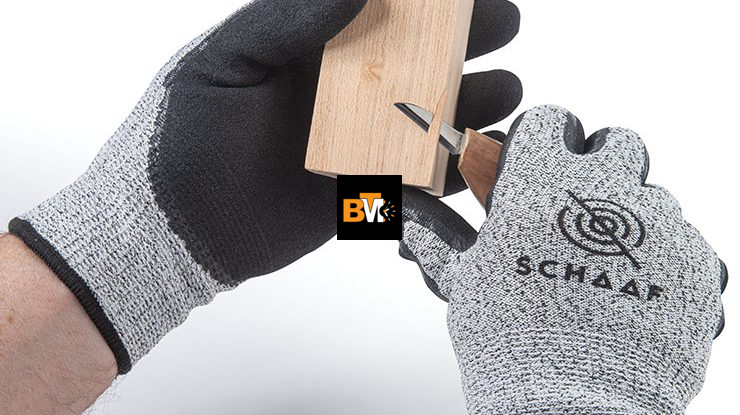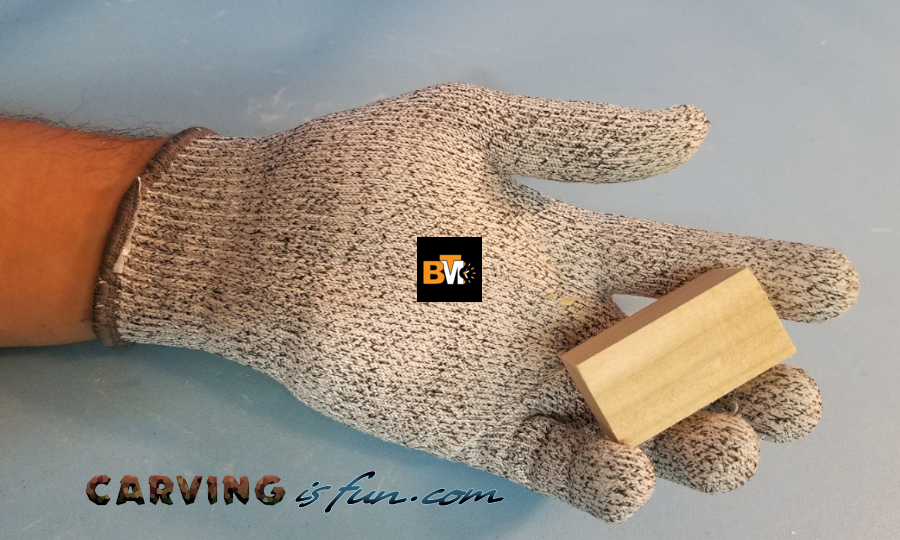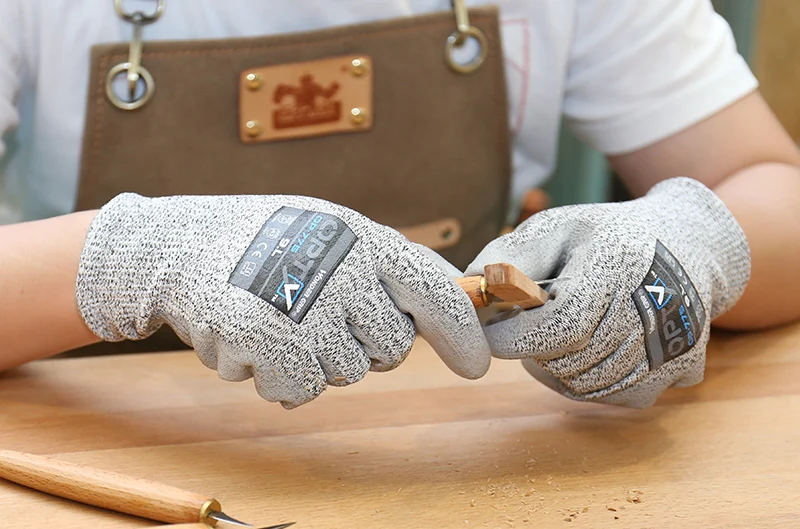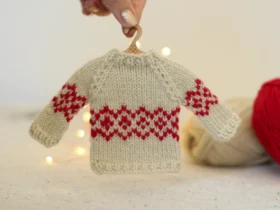Whether you’re just beginning your journey into wood carving or have years of experience behind you, safety should always be a top priority. One essential piece of safety gear every carver should own is a wood carving glove. These gloves are specially designed to protect your hands from cuts, slips, and splinters while still allowing you to carve with accuracy and control. In this article, we’ll dive deep into everything you need to know about wood carving gloves—from how they work to what makes a good pair—and help you pick the best glove to keep your hands safe while creating beautiful works of art.
What Is a Wood Carving Glove?
A wood carving glove is a specialized safety glove made for people who carve wood using tools like knives, chisels, or rotary tools. Unlike regular work gloves, wood carving gloves are designed to resist cuts and punctures. Most of them are made from strong materials like high-performance polyethylene (HPPE), Kevlar, or steel mesh. These materials are engineered to protect your hand if your carving knife slips or slips off the wood surface.
Wood carving gloves are usually worn on the hand opposite the one holding the knife. For example, if you are right-handed and use a knife in your right hand, you wear the glove on your left hand to protect it from accidental cuts. Some carvers prefer to wear gloves on both hands for extra safety. These gloves come in various sizes and styles, and many are specifically designed for kids, beginners, and professional woodworkers.
Why Do You Need a Wood Carving Glove?
Accidents happen—even to experienced carvers. A moment of distraction or a slip of the hand can result in deep cuts or punctures. That’s where a wood carving glove becomes essential. It acts as a shield to your fingers and palm, absorbing pressure and resisting knife contact.
Wood carving gloves are especially helpful for beginners, kids, and hobbyists who might not yet have full control over their tools. They also protect you from blisters and fatigue by adding a layer of padding between your skin and the tools. With gloves, you’ll carve with more confidence, knowing that your hand is protected.
Wearing a glove also gives you peace of mind, allowing you to focus on your artwork instead of worrying about injuries. In short, a carving glove keeps your hobby safe and enjoyable.
What to Look for in the Best Carving Gloves
Not all gloves are created equal. When you’re shopping for the best wood carving glove, you want something that offers both safety and comfort. Here are the top features to look for when buying carving gloves:

Cut Resistance is Key
The number one feature of any carving glove is cut resistance. Look for gloves with a high ANSI or EN388 cut level rating, which tells you how resistant they are to sharp blades. Gloves with Level 5 cut resistance offer excellent protection and are often used in industrial and kitchen environments. Materials like Kevlar, Dyneema, and steel fiber blends are commonly used in high-cut-resistance gloves.
Comfort and Flexibility Matter
You’ll be wearing your gloves for long periods, so comfort is crucial. A glove that’s too thick or stiff can make it hard to hold your tools or shape your wood. Look for a glove that balances protection with flexibility. Lightweight gloves made from HPPE or nylon blends are soft, breathable, and let your hand move naturally without sweating too much.
Grip That Doesn’t Slip
One of the most overlooked features is grip. A good carving glove should give you a firm hold on your tools and wood pieces without slipping. Some gloves come with rubber or silicone-coated palms to improve grip. A secure grip makes it easier to control your movements and prevents accidents caused by slippery tools.
Are Carving Gloves Good for Beginners?
Absolutely. If you’re just starting out in wood carving, a carving glove is not just recommended—it’s essential. Beginners often apply too much pressure or make sudden movements, which can increase the chance of the knife slipping. A wood carving glove for beginners can protect your fingers from these common mistakes and help you build your skills safely.
Beginners are also more likely to carve for fun and practice over long hours, which can lead to hand fatigue and small cuts. A comfortable, cut-resistant glove can protect your hand while helping you enjoy the learning process without stress or injury.
Best Wood Carving Gloves for Kids and Adults
There are wood carving gloves designed specifically for kids, teens, and adults. Kids’ gloves are typically smaller and come in brighter colors to make them fun and easy to wear. They also tend to be more flexible so that children can move their hands freely. Look for gloves labeled cut-resistant gloves for children when shopping for young carvers.
Adults, on the other hand, need gloves that offer a higher level of protection and durability. Brands like NoCry, Dowellife, Youngstown, and Mechanix Wear offer gloves suitable for professionals and hobbyists. Always read reviews and double-check the cut resistance level before buying.
How to Pick the Right Size Glove
Getting the right size glove is just as important as picking the right material. A glove that’s too loose can slip off or interfere with your carving. A glove that’s too tight can cut off circulation and make your hand cramp. Here’s how to make sure your glove fits perfectly:

Use a Measuring Tape
Take a soft measuring tape and wrap it around the widest part of your hand, usually just below the knuckles. Don’t include your thumb. Record the measurement in inches. This number will help you match your hand size with the glove size chart.
Check the Manufacturer’s Size Chart
Each glove brand has its own sizing chart. After measuring your hand, compare your measurement with the manufacturer’s recommended sizes. Most gloves come in Small, Medium, Large, or Extra Large, but always go by the actual inches or centimeters listed.
How to Care for Your Carving Gloves
To keep your gloves in top condition, clean them regularly. Most cut-resistant gloves can be washed in cold water with mild detergent. Avoid bleach, hot water, or machine drying, which can damage the fibers. Let your gloves air dry completely before using them again. If your gloves start to fray or lose their grip, it’s time to replace them.
Where to Buy the Best Wood Carving Glove
You can buy wood carving gloves online or in stores that sell woodworking tools. Top e-commerce platforms like Amazon, Home Depot, Rockler, and Woodcraft have a wide selection. Look for gloves that mention features like cut resistance, non-slip grip, flexibility, and durability in the product description. Read user reviews to see what other carvers have to say. Many top-rated gloves cost between $10 and $30, making them an affordable investment in your safety.
The Bottom Line
Whether you’re a beginner or an experienced carver, a wood carving glove is one of the smartest safety tools you can own. It shields your hands from accidental cuts, gives you a better grip, and helps you work with more confidence. Choose gloves that are cut-resistant, flexible, and breathable, and make sure they fit your hand size properly.
For kids just starting out or adults looking to carve like pros, carving gloves make the process safer and more enjoyable. With so many quality options available, there’s no reason to carve without one. So the next time you pick up your carving knife, don’t forget your glove—it might just be the best tool in your kit.







Leave a Reply